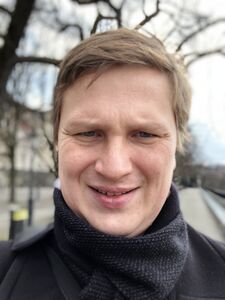The Whole Is Other than the Sum of the Parts
By Radosław Nawrot, CEO at Radalco
I’m writing these words in the time of a global health crisis. Sitting in an empty office, implementing social distancing theory, I realize that this time might be an unexpected but precious gift. A gift of time I did not have before. A time to think at a more global level. Time to go back and see daily routine from a different perspective.


Fig.1 Law of Proximity applied in a real-world scenario

Fig2. Good gestalt principle builds a path of execution in our minds
OneSpin Solutions headquarters is based in Munich, Germany. As a foreigner, I asked myself – what are my first mental associations with Germany besides a beer? Yes, it is die Ordnung a German word for orderliness. But Ordnung is more than that; this is a way of collecting, classifying, and implementing the world around you; this is an engineering way of thinking.
Ok. Let’s go further. Another German word – die Gestalt. It means shape. This concept created by German psychologists during the 1920s is well known as the principles of grouping. Those principles were claimed as the results of the observation that humans naturally perceive objects as organized patterns. One hundred years ago, no one could expect that those observations will be essential to build an excellent User Interface.
We, as engineers, know how to interface with different libraries, systems, etc. But how well do we know the “human API”? All of us have some preferences for setting our work environment, but some of them are common for all humanity. Using this joint set is a crucial element to create an intuitive and sheer work environment. A great example of this approach is the Law of Proximity applied to the list of checks (vide figure 1).
Generally, we are looking for any violation of the rules we check. In most cases, there are only two distinct stages – “all green” or “something to investigate.” In this case, a small signature at the top of the tab is enough. That was a trivial scenario, but it is only an example. The Law of Proximity can apply to all our design and verification work. From the way we prepare specifications via the structure of the project to the way we report our results.
Ok, presentation of the results is essential, but can we do something with more complex features like debugging? Debugging is one of the most critical and time-consuming parts of our job. According to the 2018 Wilson Research Group Report, FPGA Verification Engineers spend up to 42% of their time debugging. For ASIC projects, those numbers are even higher – up to 44%.
We all use some kind of automation at this point, so what can we do better?
Debugging is like a journey through a maze, and only if we follow the right path, we will succeed. So how do we become a Theseus of debugging? Like the mythical hero, we need a string to follow. This string is an execution path created thanks to EDA software. When we follow it, a maze becomes a corridor. The good Gestalt principle tool can help us to build one. You can find the example of such vise debug support in figure 2: Cross feature reference and cross-probing fundamental bricks in this construction.
Gestalt laws are a big help for all of us, but they are also a threat. Some defects might be misclassified due to the Law of Similarity. Results might be misinterpreted thanks to the Law of Closure. Those problems are just the tip of the iceberg, but it is a topic for a different blog.
One more thought as we end this blog, I have had the pleasure of being a part of the OneSpin Team since November 2019. The OneSpinners are a group of great, proactive people. But they are more than that! Even the best engineers would not be able to achieve what the team can do, and this is a place where I can finally refer to the title of this blog. Title borrowed by me from Professor Kurt Koffka – “The Whole Is Other than the Sum of the Parts.” In this case, “the Whole” makes a great product.
Stay healthy
